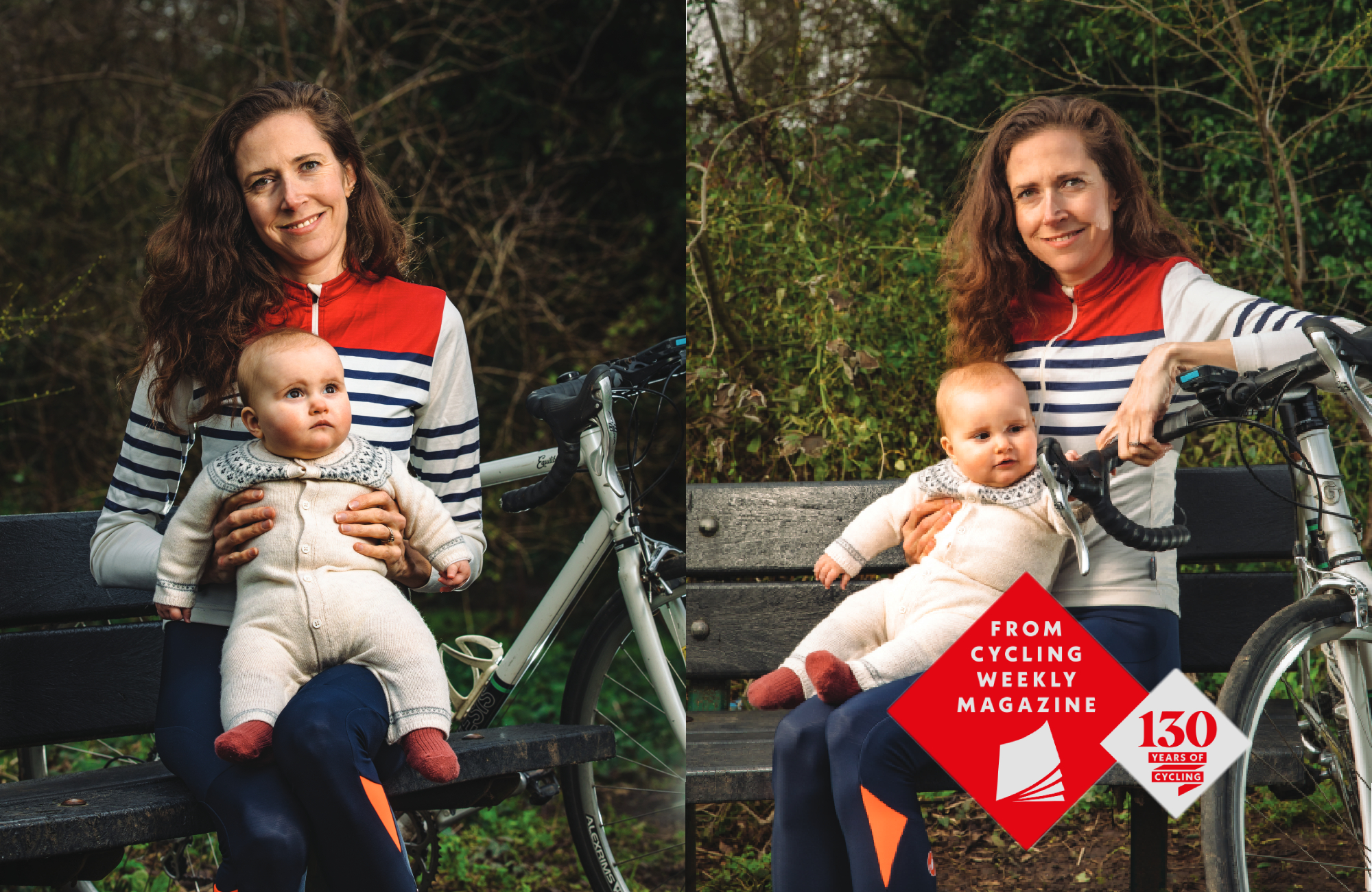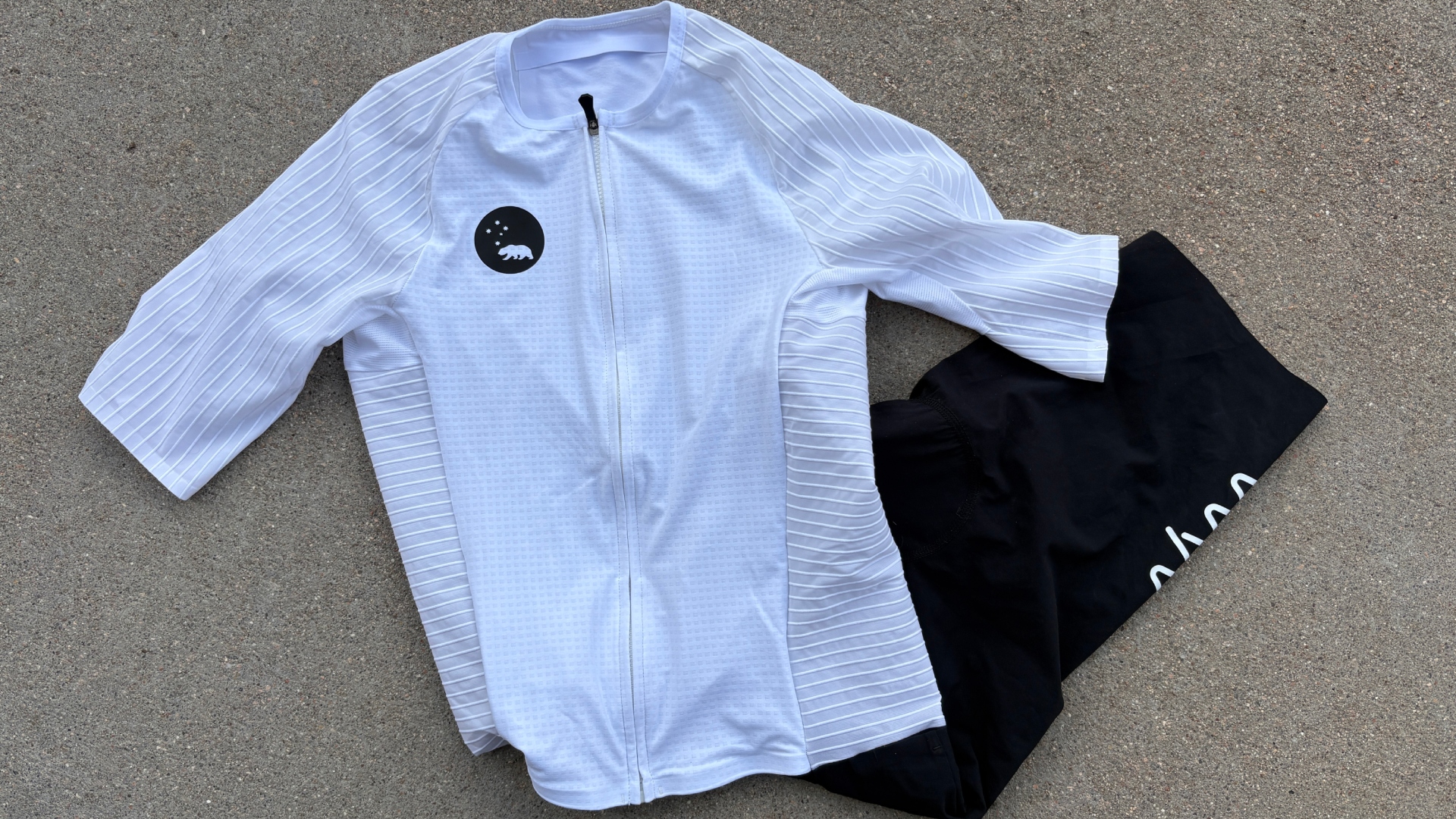Gestating a revolution! How I challenged convention to continue cycling while pregnant
Author Hannah Ross reveals how she tapped into the history of revolutionary women cyclists to challenge convention on cycling while pregnant

Hannah Ross (Daniel Gould)
For eight months of 2019, I swapped urban north London for rural Aude, in the foothills of the French Pyrenees, to write my book Revolutions: How Women Changed the World on Two Wheels, about the history of women’s cycling. When I wasn’t at my desk, I was on my bike, and instead of slogging up the A1000 to Hertfordshire each weekend, I was cycling straight from my door into sensational scenery – hills and mountains in every direction. I was the fittest I had ever been.
When I found out I was pregnant that autumn, I did not think twice about continuing cycling. I thought of Nobel scientist Marie Curie cycle touring in the 1890s while eight months pregnant, only cutting it short to return to Paris to give birth. I wanted to maintain my fitness as much as possible, and I knew it would be better for my pregnancy and recovery to stay active.
I remembered Pippa Lyon, one of the members of the InternationElles – the group who ride every stage of the Tour de France to raise awareness of women’s exclusion from the event – whom I joined on stage 15 in 2019. She had given birth just 11 months before taking on that epic challenge. Pregnant women were once encouraged to rest up, but now, provided the pregnancy is straightforward, they are advised to keep active for as long as is comfortable.
A potential complication for me is I have a genetic condition called Marfan’s Syndrome, which can, albeit rarely, cause fatal heart complications. This is more likely with a spike in blood pressure, something that can happen in pregnancy. I worried my cardiologist would insist I take things easy, but to my relief she encouraged me to keep up my normal level of activity as long as it felt right.
When researching my book, I learned how in the 1890s, when cycling was the new craze gripping the West, women were enthusiastic converts. But they came up against many who thought they shouldn’t be on a bike at all, with even some medics claiming that just to sit in a saddle would be their ruin, causing an array of disorders including infertility and physical deformities. Nonsense, of course, and today we have pro cyclists like Lizzie Deignan who kept training until three days before the birth of her daughter. She was signed up by team Trek-Segafredo while pregnant and was training again six weeks after giving birth. Seven months later, Deignan was back racing, winning The Women’s Tour two months after that.
>>> Subscriptions deals for Cycling Weekly magazine
With new research showing that pregnancy pushes the body close to the maximum limit for human endurance, it makes sense that new mums can return to sport stronger than ever. Deignan highlighted a scarcity of information available on training during pregnancy as an elite athlete, and instead sought the advice of other pro cycling mothers Dame Sarah Storey and Laura Kenney. She told me there needs to be “education for everybody” to raise awareness that it’s possible for women to exercise more during pregnancy than they have been led to believe.
Get The Leadout Newsletter
The latest race content, interviews, features, reviews and expert buying guides, direct to your inbox!
I had no racing ambitions but I knew I could keep doing my usual long weekend rides for as long as it still felt good to do so. As my jerseys became increasingly difficult to zip up, those rides became less about the miles and more about whether there was a good cafe for those now even more important cake stops.
I had never been pregnant before, so I had no idea when I might stop. I was also continuing to commute the five miles each way by bike to work and to midwife appointments, where I was the only person in the waiting room with a helmet.
When the pandemic hit, those rides out of London had to stop and instead I joined every other cyclist in north London doing Regent’s Park laps. The now-lighter traffic made me feel more secure on the roads, even with a sizeable bump. The low-impact nature of cycling also made it an ideal exercise, since relaxin, a pregnancy hormone, made my ligaments more stretchy. And given the risk of Covid transmission on public transport, biking became one of the safest ways to travel.
In the end, I had a C-section, so it was a frustrating six weeks before I was able to do more than a short walk without pain. But within a few months I felt almost back to normal. My first proper ride, along the rollercoaster lanes of the South Hams, in Devon, was only just a bit more punishing than I had feared it might be. It felt so exhilarating to be back in the saddle.
>>> Cycling Weekly is available on your Smart phone, tablet and desktop
Now, of course, the challenge to find time for riding really begins!
‘What I learnt’
Moderate exercise during pregnancy reduces the risk of complications, yet uncertainty persists: Pregnancy pushes the body to the limits of human endurance – it’s a biological Tour de France!
Go at a pace that feels comfortable, and take particular care in the first trimester: Make alterations to your bike set-up to make the position more comfortable as you get bigger.
Champions of yore - inspired by female cycling stars of the 1890s’
The idea for my book Revolutions came out of learning how my great-grandfather had won medals in races at Herne Hill Velodrome in the 1890s. I was curious as to whether women were also competing at this time, and after some research, I discovered that they were. Some of them had even got quite famous; for example, French-Canadian Louise Armaindo who swapped life in the circus for one on the track, racing first a penny-farthing then a safety bicycle – against other women, men and even horses. And France’s Lisette Marton who set an Hour record and became a global cycling star. Or the UK’s Monica Harwood who competed in six-day races in front of thousands. I was inspired, and my research took off from there!
Revolutions: How Women Changed the World on Two Wheels by Hannah Ross is published by Weidenfeld and Nicholson in Hardback and eBook on 1 April 2021.
This feature originally appeared in the print edition of Cycling Weekly, on sale in newsagents and supermarkets, priced £3.25.
You can subscribe through this link here.
That way you’ll never miss an issue.

Thank you for reading 20 articles this month* Join now for unlimited access
Enjoy your first month for just £1 / $1 / €1
*Read 5 free articles per month without a subscription

Join now for unlimited access
Try first month for just £1 / $1 / €1
Founded in 1891, Cycling Weekly and its team of expert journalists brings cyclists in-depth reviews, extensive coverage of both professional and domestic racing, as well as fitness advice and 'brew a cuppa and put your feet up' features. Cycling Weekly serves its audience across a range of platforms, from good old-fashioned print to online journalism, and video.
-
 Save £42 on the same tyres that Mathieu Van de Poel won Paris-Roubaix on, this Easter weekend
Save £42 on the same tyres that Mathieu Van de Poel won Paris-Roubaix on, this Easter weekendDeals Its rare that Pirelli P-Zero Race TLR RS can be found on sale, and certainly not with a whopping 25% discount, grab a pair this weekend before they go...
By Matt Ischt-Barnard
-
 "Like a second skin” - the WYN Republic CdA triathlon suit reviewed
"Like a second skin” - the WYN Republic CdA triathlon suit reviewed$700 is a substantial investment in a Tri Suit, and it is, but you’ll definitely feel fast in it
By Kristin Jenny